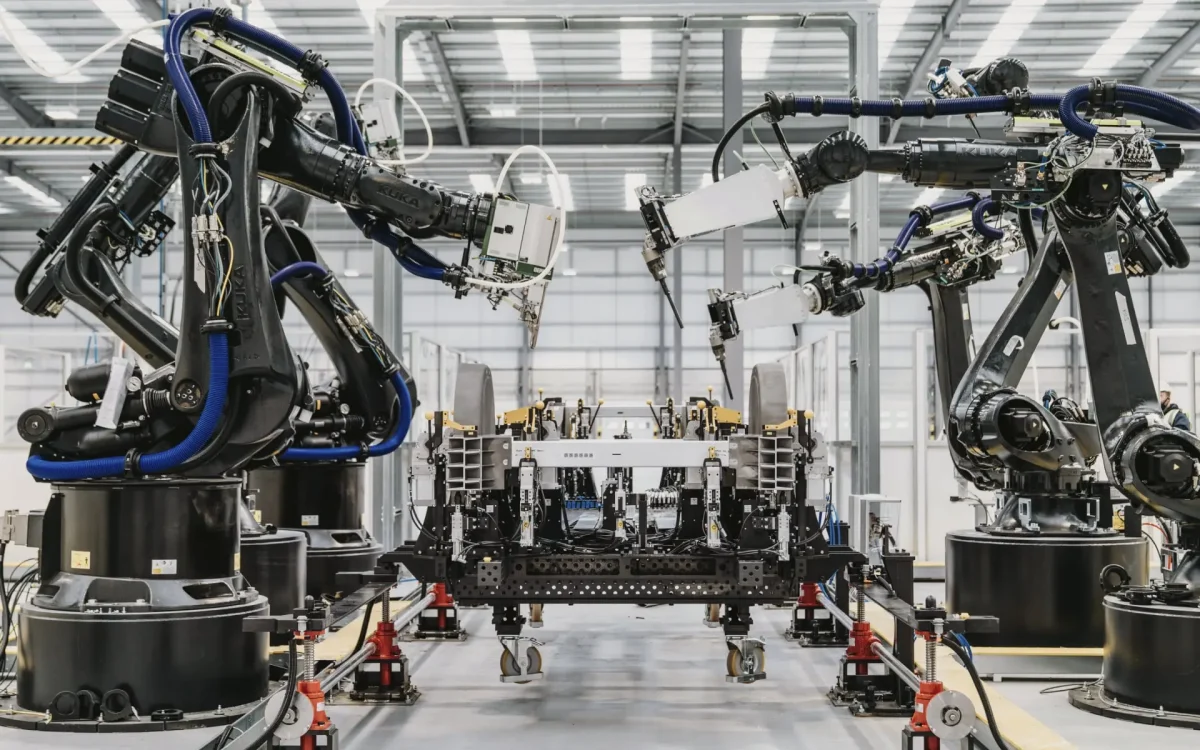The process of manufacturing a car (as we know it today) was established in 1913, when Henry Ford installed the first assembly line. A conveyor belt moved vehicle parts and components towards workers, instead of the other way around, allowing for more efficient use of resources at higher productivity rates. What once took over 12 hours and an artisan to produce, could now be done in only 90 minutes (Ford, 2022).
Over the last decades, technological advancements in areas such as robotics and AI have revolutionized car manufacturing and created new consumer demands. One thing, however, has remained the same: the moving assembly line.
Or has it?
Earlier this year, the UK based technology company Arrival successfully produced the first electrical van in a microfactory, breaking away completely from the traditional assembly line. Specifically, the team employed autonomous robots and in-house technologies in a fully automated, software powered process (Tomlison, 2022).
But, what is the big deal?
Microfactories promise to revolutionize the manner in which we manufacture and distribute goods. Although the concept of a microfactory is not new, it was introduced in 1990 by Japan’s Mechanical Engineer Laboratory, technological developments have allowed for its application to reach a variety of industries, including of course, the automotive industry. A microfactory is a high-tech, small scale manufacturing space that focuses on using less energy, materials and workforce to manufacture goods in an automated manner according to product dimensions (FutureBridge, 2020).
Okay, but what does this mean for the manufacturing of cars?
Thanks to microfactories, the process of manufacturing cars could become less capital intensive and reduce operating expenses. Let’s take a look at exactly how:

In addition to this, microfactories have the potential to disrupt the way in which cars are distributed, by reducing the complex and expensive network (FutureBridge, 2020).

Despite their high potential, microfactories do not come without challenges. Specifically, companies such as Arrival are working to figure out how to scale up production in order to serve a larger number of consumers and achieve mass production.
Nevertheless, one thing seems certain: Microfactories might be the future of manufacturing. A future where the needs of end users are directly served without intermediaries and mass manufacturing becomes personalized by means of AI, robotics and automation.
References
Ford (2022) The moving assembly line and the five-dollar workday, Ford Corporate. Available at: https://corporate.ford.com/articles/history/moving-assembly-line.html (Accessed: October 9, 2022).
FutureBridge (2020) Microfactories – the next big thing in manufacturing, FutureBridge. Available at: https://www.futurebridge.com/blog/microfactories-the-next-big-thing-in-manufacturing/ (Accessed: October 9, 2022).
Tomlison, V. (2022) Arrival Produces First Production Verification Van in Microfactory, Arrival . Available at: https://arrival.com/us/en/news/Arrival-Produces-First-Production-Verification-Van-in-Microfactory (Accessed: October 9, 2022).


